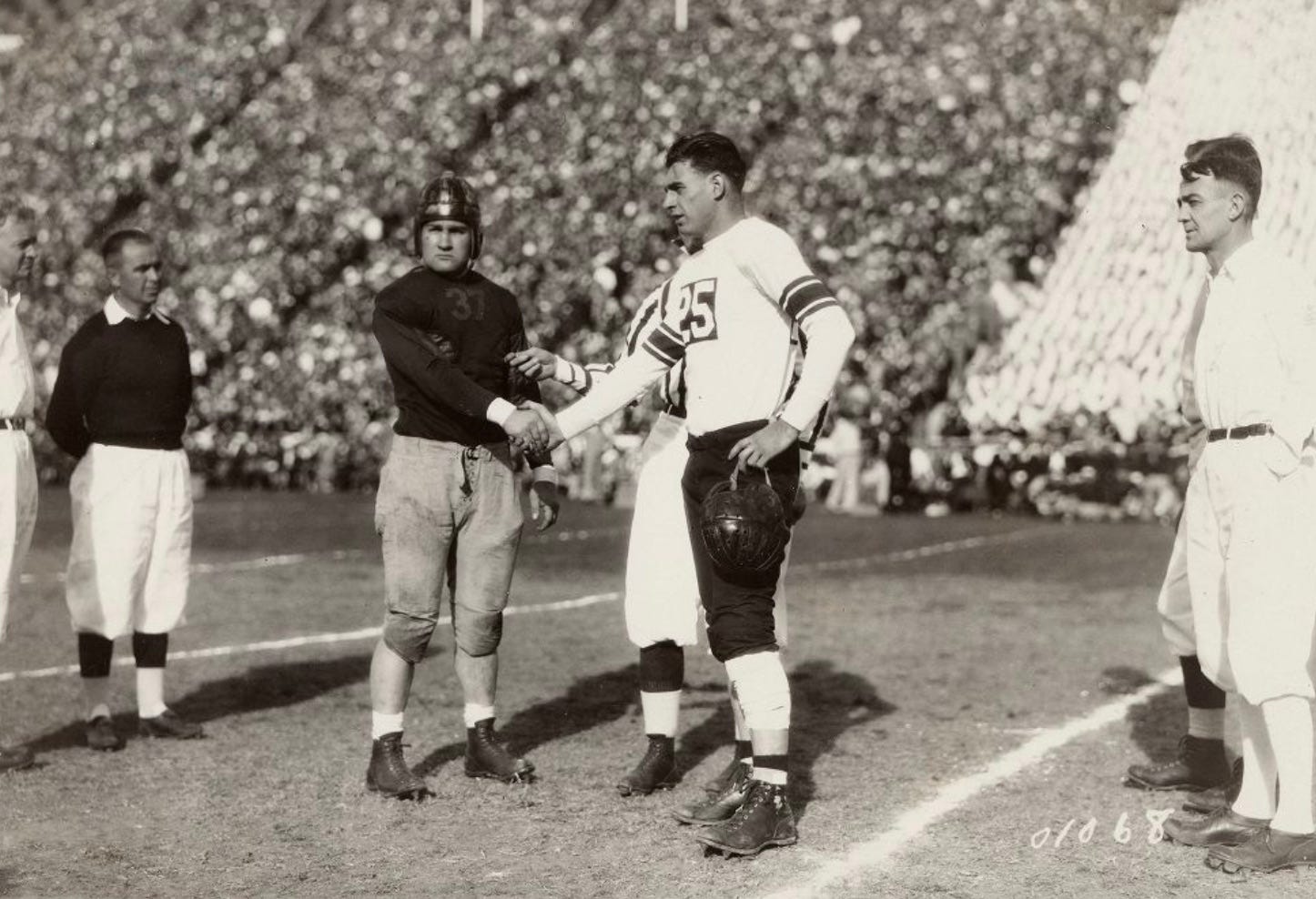More Alternatives to Zebra Shirts
Each week, schools across the nation excitedly announce the unique combination of colors and styles their teams will wear that weekend. Yet, despite the hype, the never-ending variety all starts to look the same. The weekly new duds, you might say, have jumped the proverbial duck. Conversely, the other guys on football fields – the officials- show up game after game in the same black-and-white striped shirts to unerringly make their calls.
Despite the prevalence of the officials' zebra outfits today, it took decades for those shirts to become the dominant look nationwide, as I detailed in an earlier article. While I encourage readers to read that article, I'll provide a summary before discussing the newly identified alternatives to the zebra shirt that are the focus of this article.
When football began, officials wore everyday clothes or their college letters sweaters on the field. The latter symbolized their knowledge of football and their neutrality since officials seldom worked games involving their schools. However, by the 1920s, many basketball and football officials wore white shirts and pants (or knickers). White visually differentiated officials from the players since teams seldom wore white. (It became customary to wear white on the road in the 1950s to help TV viewers distinguish the blue team from the red. The NCAA only mandated white for the visiting team in 1983.)
Although some teams preceded them, Stanford, Northwestern, and a few other teams began donning white jerseys in the 1920s. During the same period, state high school and regional college football associations worked to enhance the quality and integrity of officiating by training and testing prospective officials. Having officials wear consistent garb helped reinforce the value these organizations provided, so most mandated their officials wear a uniform of one design or another.
Some groups opted for the black-and-white zebra shirt. Created by Lloyd Olds, an official and professor at Eastern Michigan, the zebra shirt spread organically before being adopted by the associations. However, some groups of officials went their own way as the previously mentioned article documents. The Southeast Football Officials Association (SFOA) and the Southwest Football Officials Association (SFOA) shared acronyms/neologisms, but not shirts since they designed separate alternatives to the zebra.
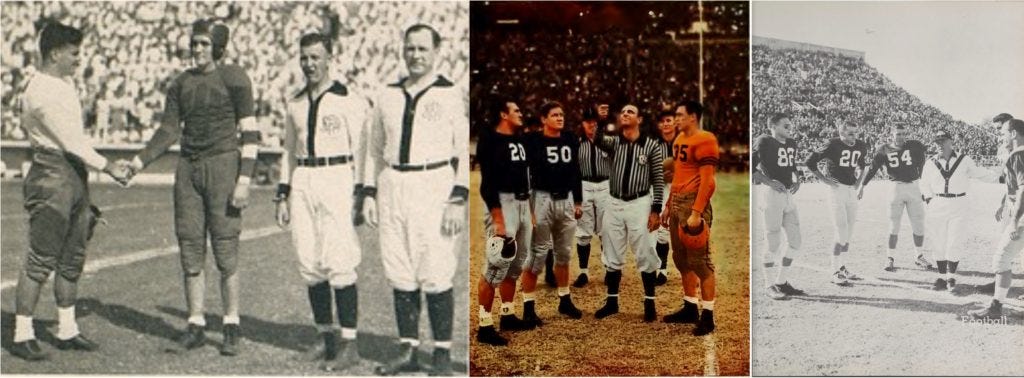
This brings us to several alternatives I came across recently that arose on the West Coast in the second half of the 1920s. The West Coast variations seem to have been used only a few times before giving way to the zebra shirt. Unfortunately, there is next to nothing written about these shirts, so it is difficult to determine the motivation for their use, but that will not keep me from speculating about it.
I first saw the image below on a football collectors' forum. While most would see the picture and appreciate the exquisite blocking his white-clad Stanford teammates provide ball carrier, Dick Hyland, my eyes shifted to the referee trailing Hyland and his shirt.
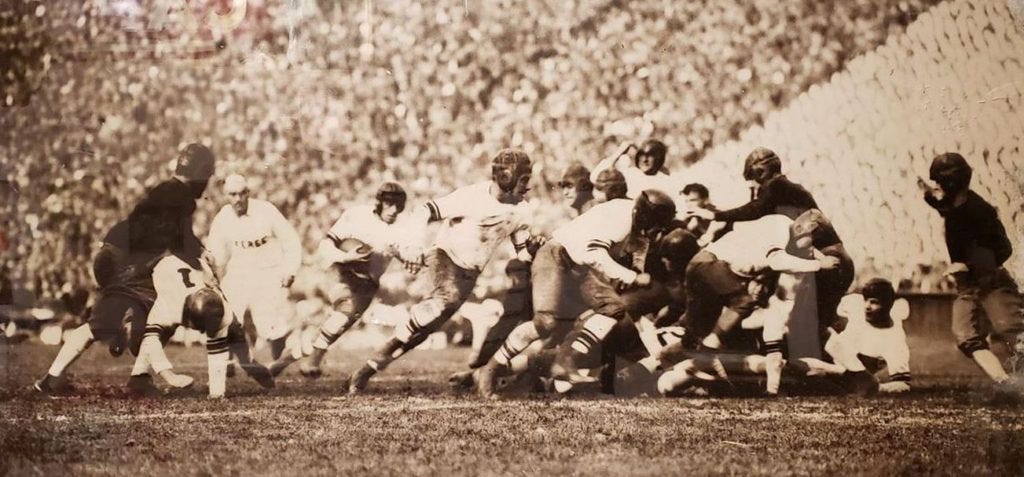
The referee is Sam Dolan, a Portland native whose Notre Dame playing career began in 1906, just as the forward pass became legal. After graduating, he assisted and then became head coach at Oregon State before concentrating on his faculty position in the Oregon State's engineering department. Dolan officiated on this side, regularly handling top games on the Pacific Coast, including the multiple Big Games and Rose Bowls.
Dolan appears to have first worn his REFEREE shirt in the 1927 Santa Clara-Stanford game played a week before the Big Game.
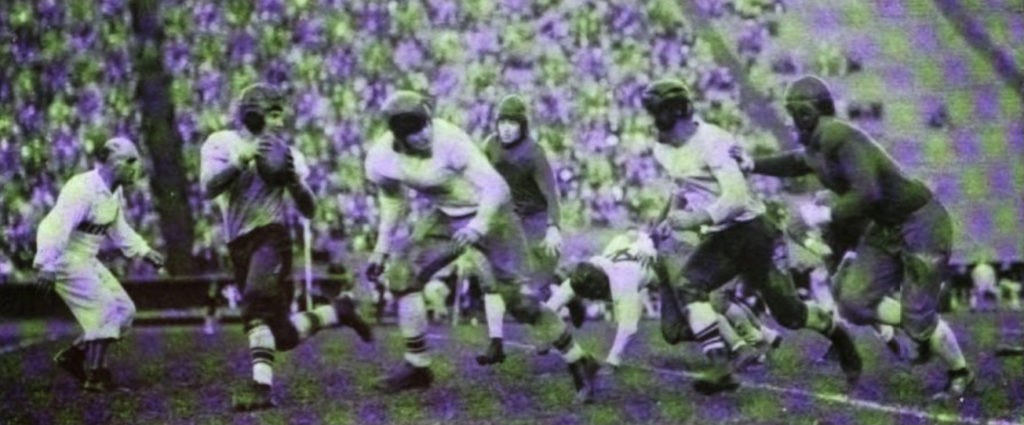
Initially, it appeared that Dolan was the only labeled official handling the 1927 Big Game, but a second image shows Dolan on the far right in his referee shirt. Meanwhile, umpire J. C. Cave stands to the left wearing a colored vest over a colored shirt.
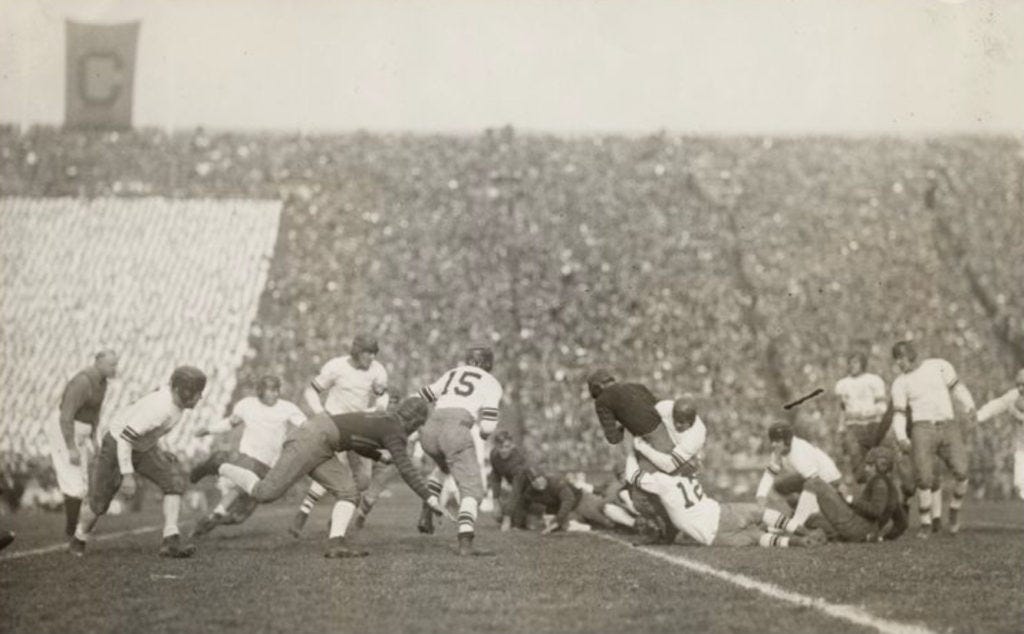
A third image from the game shows J. C. Cave standing in the background, and close examination shows Cave's vest has UMPIRE written on the chest. We know teams were wearing scrimmage vests in practice by the late 1910s, and this article describes their use in games when opposing teams had similarly colored jerseys, but this is the first known instance of an official wearing a colored and labeled vest in a game. Unfortunately, we do not know the color of his shirt or vest, though neither was Stanford's white or Cal's dark blue.

As with teams wearing vests in games, Cave and other officials may have worn colored vests so their white shirts were not confused with either team's jerseys. Images from other Stanford games of the era show officials wearing similar vests, so it may be that Stanford provided the vests to officials. Moreover, since officials did not perform the same role in each game, the vests could be worn by whoever handled each duty for a particular game rather than officials requiring multiple versions of their shirts. Still, the officials often chose not to wear the vests, as seen in the following image from the 1929 Big Game when five officials wore five different outfits.
The innovation advanced by the Oregon-Oregon State game officials was to wear letters on their shirts, designating their role on the officiating crew. Referee Sam Moyer had an R emblazoned on his shirt, Umpire Robert Evans wore a U, and Head Linesman Eldon Jenne outdid them all by wearing both an H and an L. (The Field Judge likely wore a similar shirt, but he does not appear in available images.)
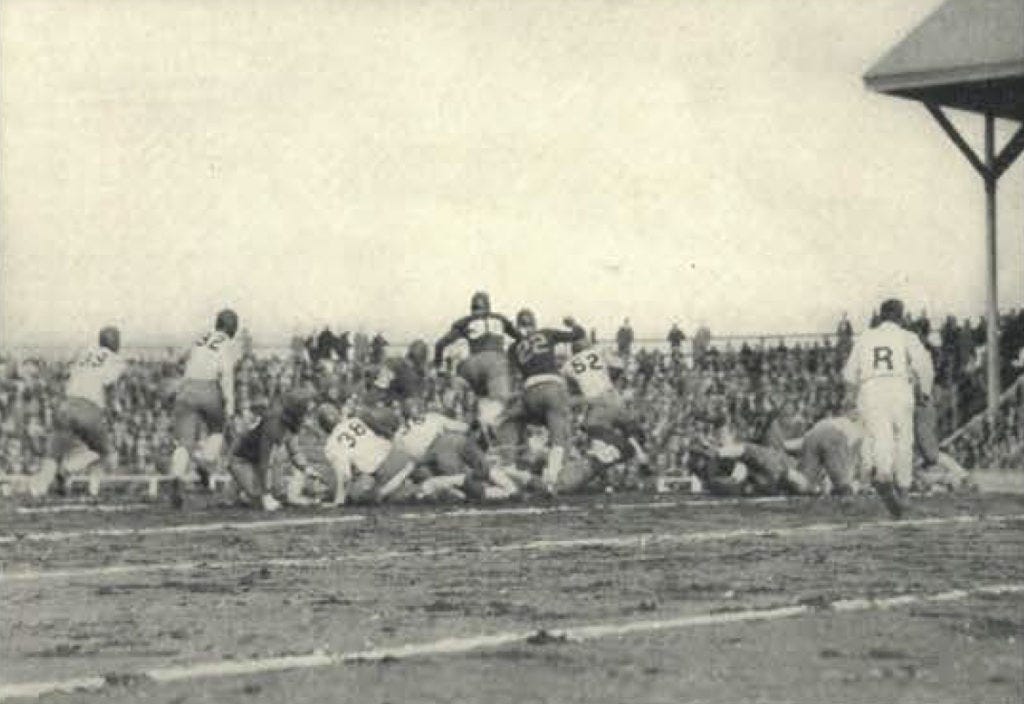

A search of images from other West Coast games of the period did not yield other examples of officials labeled by role. Still, the boys in the Oregon-Oregon State game were more than twenty years ahead of the Southeast Football Officials Association, who added role labels when they adopted zebra shirts in 1949. Unfortunately, we do not know why the Oregon-Oregon State crew identified themselves by role or why the shirts were only worn once. Hopefully, we will stumble across that information in the future.
Officials past may have worn other unidentified alternatives to the zebra shirt, but each likely failed because they did not function as well as the zebra shirt. As teams increasingly wore white, predominately white-clad officials got in the way, while those in zebra skin were easy to spot and avoid. The West Coast officials tried a few new things back in the Twenties, but they failed to set the fashion trend, and the game ultimately followed the pattern of the zebras grazing in the Midwest.
Football Archaeology is reader-supported. Click here to buy one of my books or otherwise support the site.


